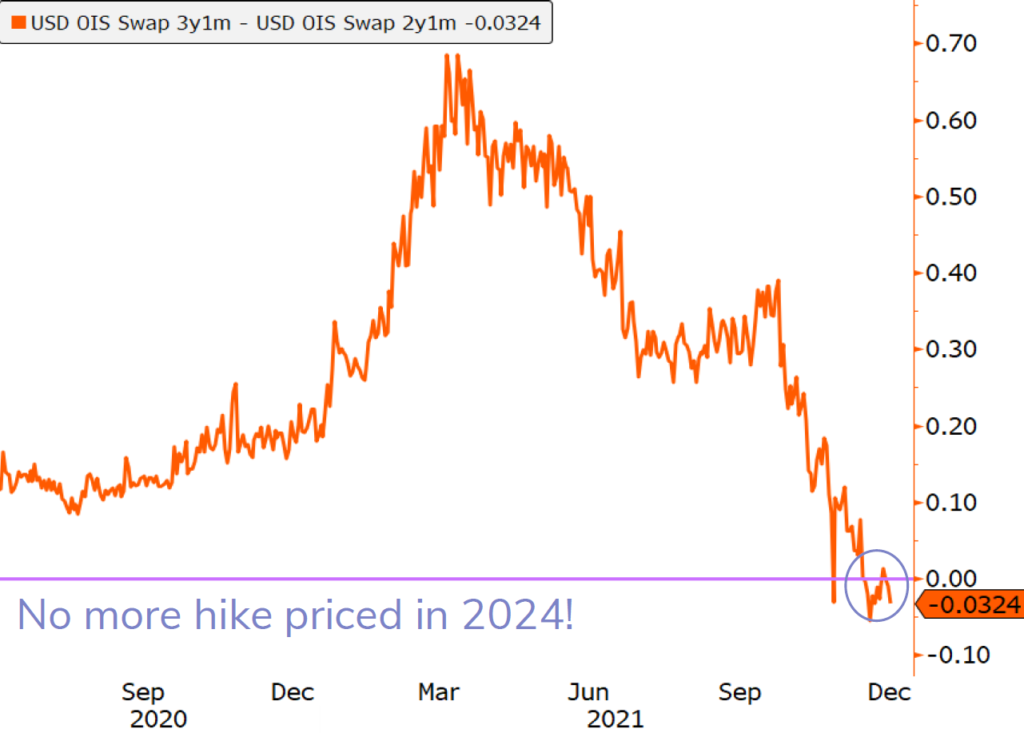The question for 2022 is at what speed will yields “normalise” and what does “normal” look like? Another important focal point is how various segments of the bond markets behave as fiscal and monetary support is withdrawn. The answer will dictate prospects for the asset class.
This has been a rollercoaster year for global bond markets, one characterised by a gradually improving global economy, COVID-19 setbacks, inflationary fears, distress within the Chinese property sector and increasingly hawkish signals from central banks.
Markets and the Fed have an interesting and dynamic relationship. For a major portion of 2021, the Fed was ultra dovish and kept brushing aside Inflation as ‘transitory’. Now when they finally seem to acknowledge that they were wrong and behind the curve, the markets don’t seem to heed the Fed’s outlook. While the latest release from the FED Dec meeting shows a terminal rate of 2.5% beyond 2024, the markets are telling us a different story with an end of normalization in 2023 and fed funds rate ending at 1.75%.
The USD OIS Forward Curve tells us that the Federal Reserve will stop hiking its reference rate in 2023 (please refer to the chart below).

Source – Bloomberg
The U.S. 10-year Treasury yield may move closer to 2% by the end of 2022. However, any higher levels may not be sustainable and may prove to be good entry points for fixed income portfolio managers.
Will Inflation Premium come back in 2022?
U.S. Treasury 10-year yields over the course of history have tended to embed a risk premium for future inflation. That risk premium was erased by quantitative easing and low rates in the 2010-2021 period. Will it reemerge once QE has ended, and short-term rates start to rise? Let’s see!
Investors seek inflation protection
Investors are piling into inflation-linked assets in a bet that consumer prices will continue to soar even as central banks gear up to tighten monetary policy after almost two years of pandemic stimulus. Inflation-protected government bonds are amongst the products absorbing cash in a search for ways to preserve spending powers.

Source: Financial Times
However, Inflation-linked Bonds are expensive currently and may not prove attractive considering the baked-in cost.
Spreads may be past their Best!
The current phase of economic recovery, lower trending default rates, and accommodative monetary policies have built a solid backdrop for spreads to compress further. But at current levels (below 285 basis points (bp) in the US high yield market and 300bp in the emerging markets), spreads leave only limited room for compression, in our view. In fact, the path of least resistance may just be a slight widening in spreads.

Recommendation
Higher rates, inflation, and possible imbalances in the credit market remain key challenges. With rate hikes already largely priced in, medium-term bonds seem to offer the most value. Meanwhile, we would see any rates move beyond 2% in the US 10-year as unsustainable and would consider such periods as opportunities to lock in rates.
We would refrain from chasing yield using high beta issuers. Instead, we would stick to a more conservative and selective strategy especially in high-yield and emerging markets until spreads become attractive again.





